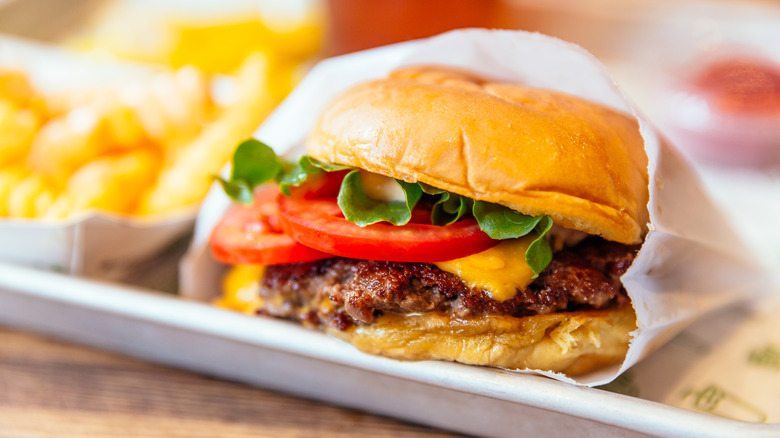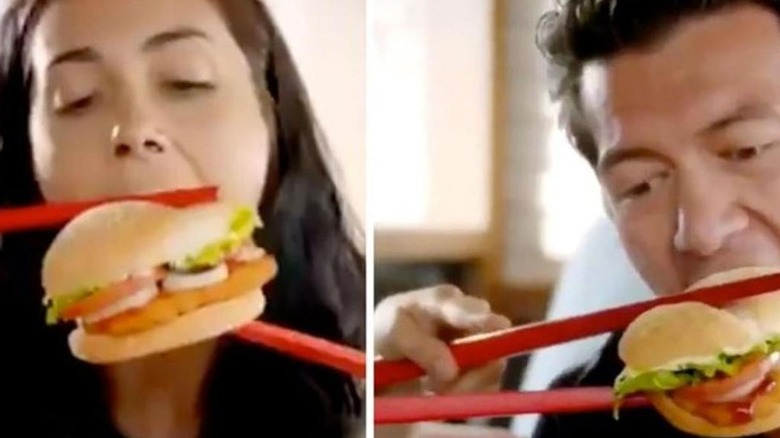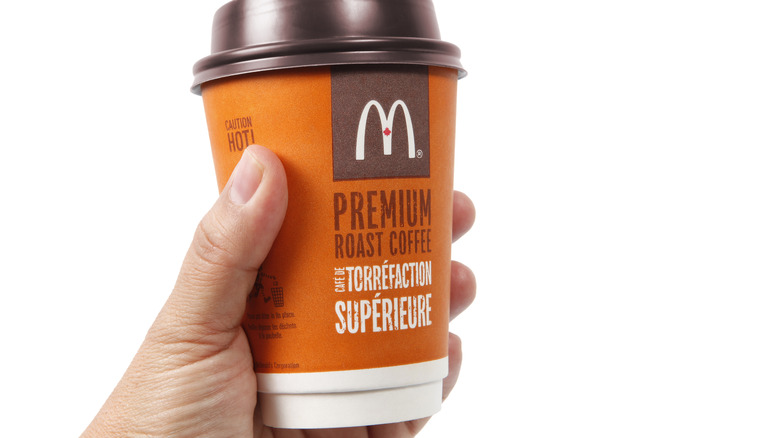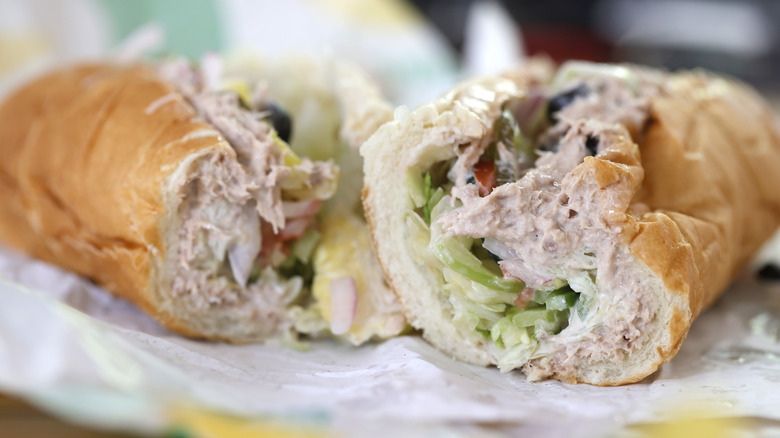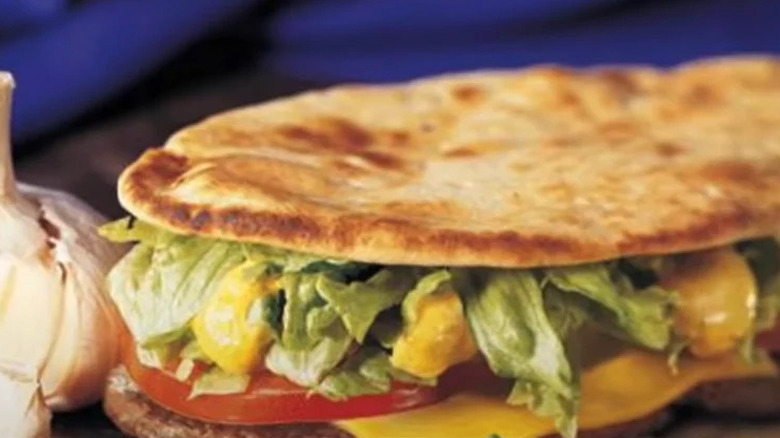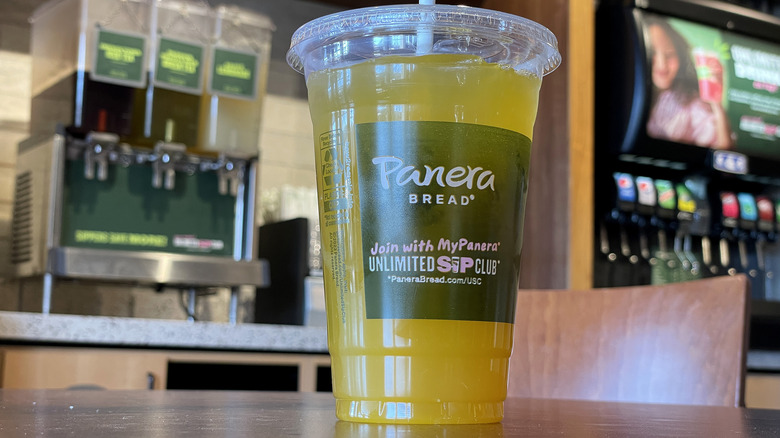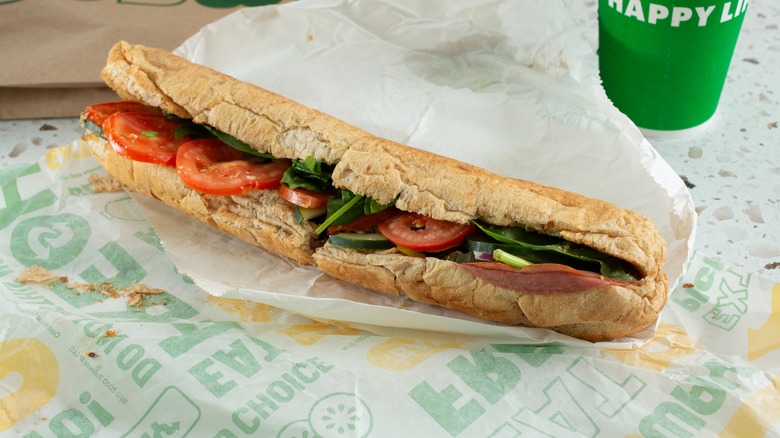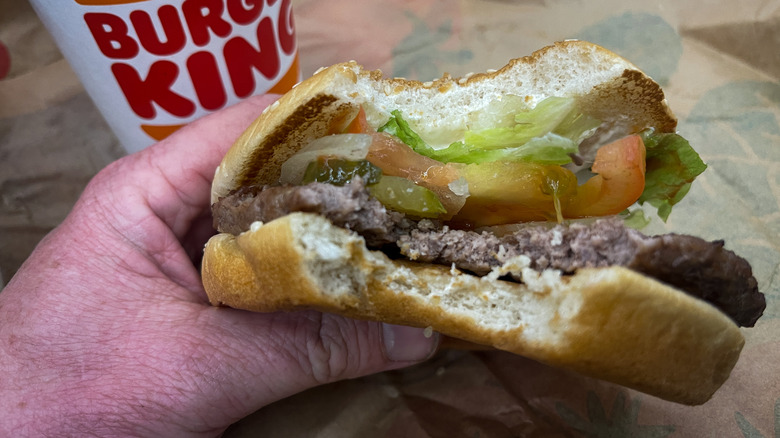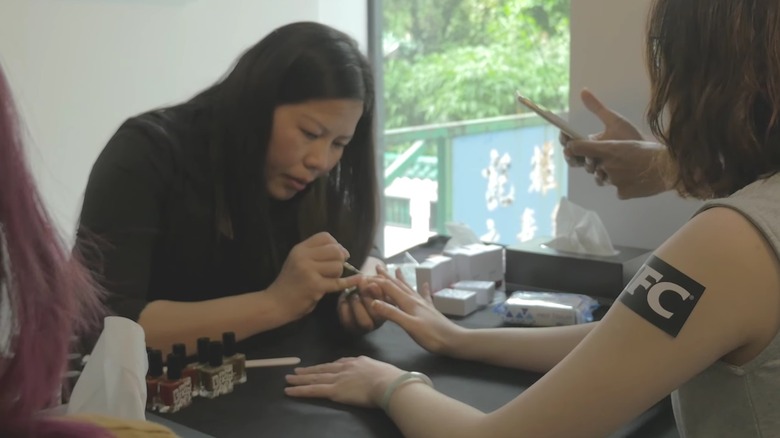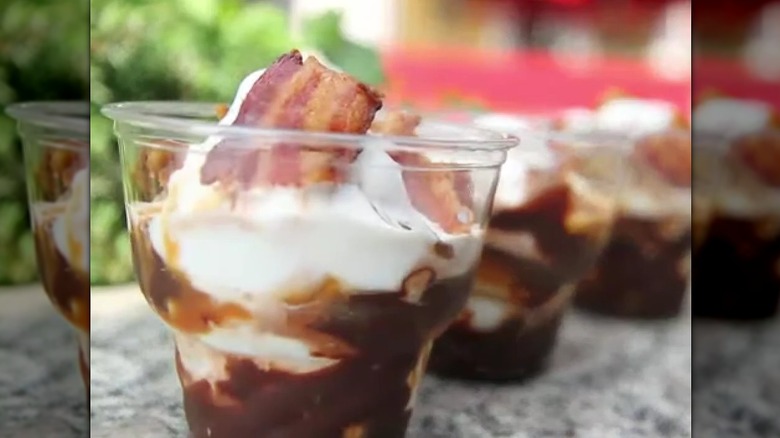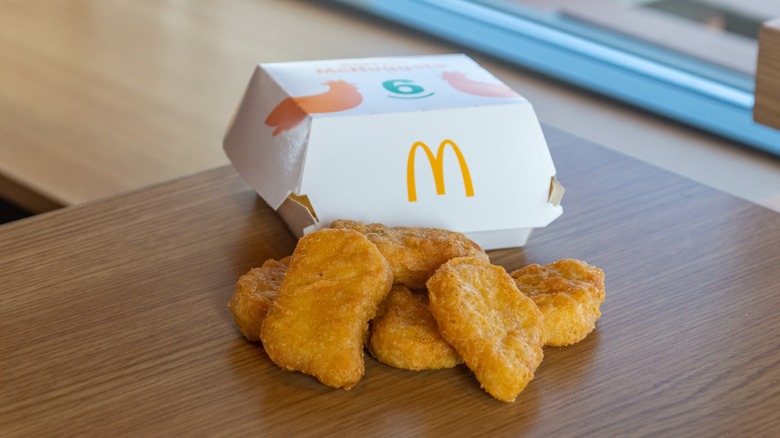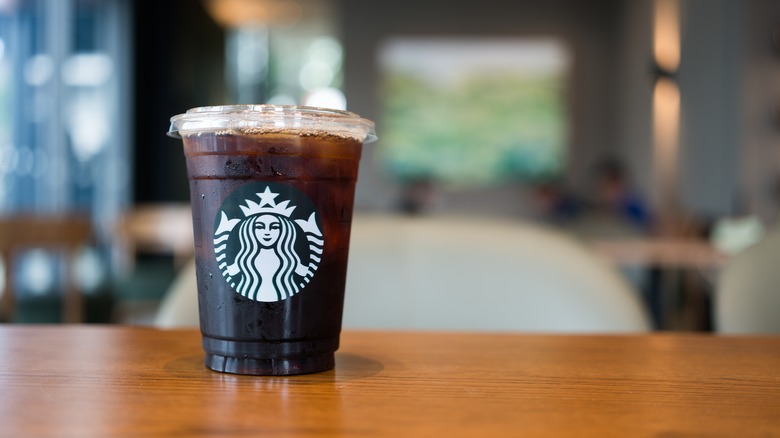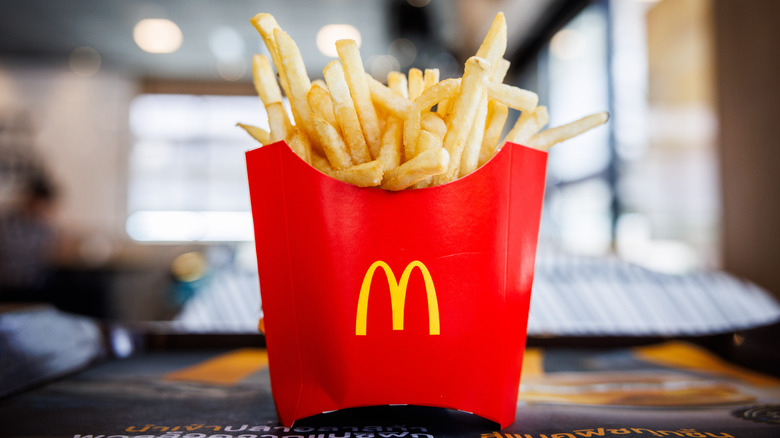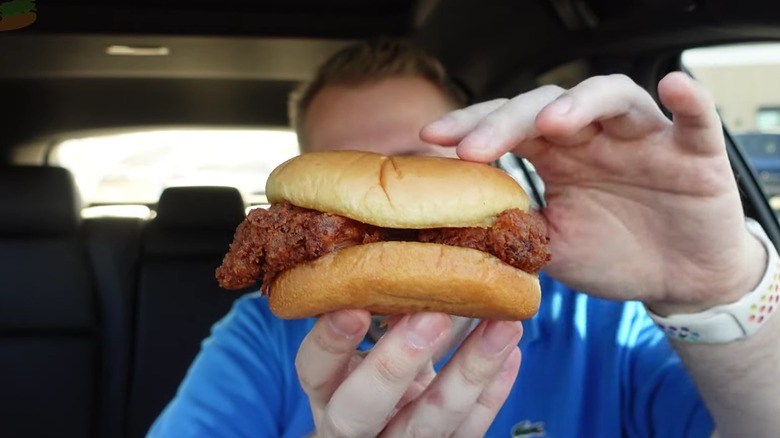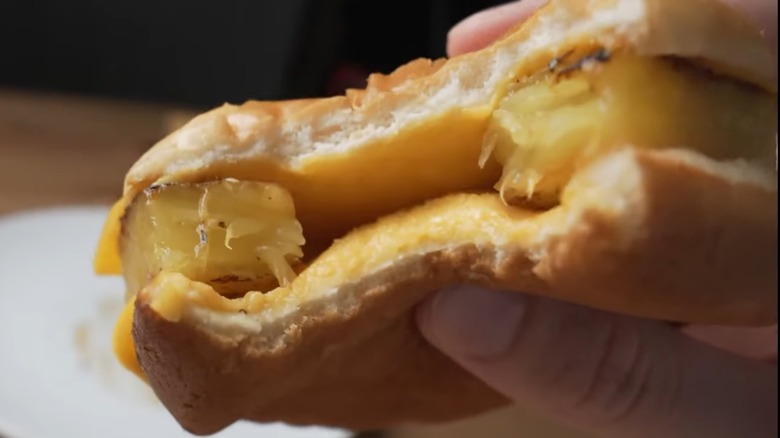Fast Food Menu Items That Upset Customers
In a report published by World Population Review, it was estimated that the global fast food industry exceeded $730 billion in sales during 2022 alone. What makes this statistic all the more staggering is that this number is expected to continue increasing until, and probably beyond, the year 2031. In order to meet this growing demand, and carve a spot in a highly competitive market, fast food businesses test and serve a huge variety of products every year. While many of these products are successful, there are a few fast food menu items that, for one reason or another, have upset customers.
There are many reasons why a fast food menu item might upset customers. It may have been marketed insensitively, contain ingredients that make it potentially harmful to consume, or, much more simply, it might just not taste very good. Whatever the reason, customers are slow to forget an upsetting menu item as the following infamous fast food items attest.
Burger King's Vietnamese Sweet Chilli Tendercrisp Burger
Burger King released its Vietnamese Sweet Chilli Tendercrisp Burger in New Zealand during 2019. While the burger itself was unremarkable, the product's commercial, which featured a slew of mostly white customers struggling to eat the burger with a pair of oversized chopsticks, drew a lot of criticism. Maria Mo, a Korean New Zealander, described how she felt when she saw the commercial in a message to Huffpost: "Because I couldn't believe such blatantly ignorant ads are still happening in 2019, it honestly took me a second to work out what the heck I was looking at."
Burger King apologized and subsequently pulled the advertisement from its social media platform and claimed it did not align with the company's diversity and inclusion values. This action did little to appease Burger King's customer base, especially those with Asian heritage, who felt that the commercial was insensitive at best and overtly racist at worst. The outcry was even greater in Vietnam where people shared plans to boycott the chain's restaurants. Many individuals also flooded the individual locations with poor reviews.
McDonald's coffee
The McDonald's coffee saga started in 1992 when Stella Liebeck, a 79 year old woman, purchased a takeout coffee from McDonald's. Sitting in the passenger seat of a parked car, Liebeck removed the lid to add sugar and cream to her coffee and promptly spilled almost the entire drink in her lap. The liquid was close to 190 F and almost immediately caused significant third-degree burns across her thighs and genitals. The burns were so bad that Liebeck required skin grafts to heal her legs.
Liebeck initially sought $20,000 from McDonald's to cover her medical bills. McDonald's counter-offered $800. This led to a lawsuit, and it soon became apparent that Liebeck's injury was not an isolated event. Approximately 700 customers had complained about McDonald's coffee during the 10 years previous to Liebeck's injury. Several people had even suffered third-degree burns themselves. Despite the prevalence of injuries, McDonald's had taken no steps to mitigate the risk posed by its coffee.
After learning that so many people had been injured before her, Liebeck's lawyers encouraged her to settle for more than $20,000 in an attempt to teach McDonald's a lesson. She eventually settled for just under $600,000. Soon after, McDonald's stopped serving its coffee at such high temperatures.
Subway's tuna sandwich
Subway's popular tuna sandwich was embroiled in a PR nightmare when a customer called Nilima Amin issued a class action lawsuit against the chain, claiming that the sandwiches partially or wholly lacked the presence of tuna. The story was quickly picked up by the media and several outlets ran investigations of their own.
The New York Times bought 60 inches worth of Subway's tuna sandwiches and sent the filling for DNA testing at a commercial food testing laboratory. The results came back inconclusive with a spokesperson from the lab saying, "There's two conclusions. One, it's so heavily processed that whatever we could pull out, we couldn't make an identification. Or we got some and there's just nothing there that's tuna." Inside Edition did the same, sending off three samples to be tested. In this instance, all three samples tested positive for the presence of tuna.
Throughout the entire process, Subway maintained its innocence, stating that the chain only uses 100% wild caught tuna. Although it felt like the suit was never going to end, Subway was vindicated in 2023 when the class action lawsuit was dismissed.
McDonald's McAfrika Burger
Timing is extremely important for all marketing campaigns with global events, news, and politics all influencing how a campaign is received. McDonald's Norway learnt this the hard way when it launched its McAfrika, a burger that contained beef, cheese, and tomatoes in a pita during 2002. There was nothing controversial about the menu item itself, rather that it was released during a significant famine that threatened the lives of 14 million people living in southern African countries including Malawi, Zambia, and Angola.
In an interview with The Guardian, Gunstein Instesjord, who was a senior policy advisor at Norwegian Church Aid at the time, said, "Twelve million people are suffering from starvation in countries such as Malawi and Zimbabwe; it is one of the biggest humanitarian disasters we have ever seen. We have nothing against McDonald's but the timing of this is insensitive."
Despite international calls for the menu item to be pulled, McDonald's stuck to its original plan and served the McAfrika until mid-September. While there were hopes that a portion of the McAfrika's sales would be donated to those fighting the famine, no concrete plans were ever developed.
Panera Bread Charged Lemonade
Panera Bread's Charged Lemonade first made headlines in 2023, when it was linked with the death of Sarah Katz, a 21 year old college student, in September of 2022. Katz had a condition known as Long QT Type 1 Syndrome which made her vulnerable to stimulants, and she suffered a cardiac arrest after drinking the lemonade, a large size of which, unbeknownst to her, contained a massive 390 milligrams of caffeine. This is only 10 milligrams less than an individual can safely consume in an entire day, according to the Food and Drug Administration.
Charged Lemonade was brought under further scrutiny later on in 2023 when it was linked to the death of Dennis Brown, a 46 year old who drank three servings of the lemonade and subsequently suffered a cardiac arrest on his walk home from the restaurant. Like Katz, Brown was unaware that the lemonade contained significant amounts of caffeine due to the lack of signage or warnings.
Despite claiming that the two lawsuits that ensued after Brown and Katz's deaths had no merit, Panera Bread added new labels to the Charged Lemonade, lowered the amount of caffeine included in the drink, and moved its dispenser to behind the counter so customers could not easily help themselves to multiple servings. In May 2024, the company went even further and stopped selling the Charged Lemonade entirely.
Subway's Footlong
Long before the tuna sandwich scandal, Subway had to face up to allegations that its famous footlong subs were an inch shorter than they should have been. This all began in 2013 when Matt Corby, an Australian Subway customer, posted an image of his sandwich next to a tape measure. Its length? Dead on 11 inches. After the post went viral, numerous other people shared similar images both in Australia and the United States. Subway's response, in which it stated that the term footlong was merely a trademark and "not intended to be a measurement of length," caused further outrage.
Subway further defended its case by saying that, due to slight irregularities in proofing, it was impossible to ensure every bun reached the requisite 12 inches. Despite this, a class action lawsuit was announced and subsequently settled for around $500,000, the vast majority of which went on lawyer fees. The settlement also required Subway to slightly change its practices to ensure that, in the future, its sandwiches would come up to the advertised length.
Burger King's burgers
During the latter months of 2012 and beginning of 2013, numerous food products across Europe were found to contain horse meat in place of beef. Multiple firms were accused of producing adulterated meat, because it was cheaper, and then mislabelling and selling it at a premium to retailers and companies including the likes of Tesco.
Aside from being found in products sold by numerous grocery stores, the scandal also affected Burger King which, after testing, found traces of horse DNA in some burgers taken from a manufacturing plant. Despite burgers taken from Burger King's restaurants testing negative, public outrage was immediate. Speaking to The Guardian, a customer called Emilie Ashen said, "It grosses me out. I don't want to be eating horse meat if I'm not told about it — I don't think I'd want to eat horse meat even if I was told about it to be honest."
Burger King sought to limit the damage by taking out full page advertisements in several national newspapers. In this space, the company apologized for what had happened and outlined its steps to ensure horse meat did not taint its products again. Burger King also dropped Silvercrest, the firm accused of supplying the tainted products.
KFC's nail polish
In 2016, KFC released a marketing campaign in Hong Kong that saw the brand produce edible fingernail polish. The product came in two flavors — or colors, depending on your point of view — original and hot and spicy. Speaking to The New York Times, Anna Mugglestone, marketing and communications director for the marketing agency that ran the campaign, said, "Yes, it is actually a real thing, I tried it myself in the office when they were doing testing. It tastes like chicken [...] I don't know how they do it."
In order to be edible, the two polishes were made from spice blends, starch, and vegetable gum. While the nail polish did taste of spices, customers reported that they did not taste of chicken. What's more, its ability to act as an actual polish was somewhat lacking with the polish being quite transparent. The final disappointment came from the product's short shelf life. Lasting only five days, the nail polish had to be refrigerated and even then it quickly spoiled.
Burger King's bacon sundae
Burger King's 2012 summer menu featured a variety of fast food menu items that were only available for a fixed period of time. One of these was the company's bacon sundae, a product that saw vanilla soft serve topped with both chocolate and caramel sauce as well as a sprinkling of small pieces of bacon. A rasher or two was also speared into the dessert for good measure.
In releasing its bacon sundae, Burger King was following a dessert trend that got its start in 2004 thanks to Heston Blumenthal, a British chef who has also tried to create the perfect fish and chips in the past. Burger King's late attempt at cashing in on this trend was treated with derision by many food journalists and customers. In a message to The Atlantic, prominent food magazine editor Helen Rosner said, "It's not the bacon that's the problem. It's the lazy assumption that putting the word 'bacon' in the name of a product ensures that you'll get mountains of breathless media coverage." To make matters worse, the sundae itself was underwhelming. Customers said that the product was far too similar to the brand's regular sundae to warrant any special attention, and that the flavor of the bacon was largely lost.
McDonald's McNuggets
Perhaps the most enduring of all fast food menu item rumors is that McDonald's McNuggets are made with something known as pink slime or pink goop. This myth stems from the early 2000's when a video emerged of a fine pink substance being used in food production. Initially, it was thought that this substance was beef, however the image soon became associated with McDonald's McNuggets with many people claiming this unsavory substance was a major ingredient.
In an effort to disprove this rumor, McDonald's released commercials revealing how the nuggets were produced. These videos showed the nuggets being made, as the company claims, from USDA-inspected boneless white-meat chicken. There was no sign of anything even slightly resembling the so-called pink slime in the videos.
Revealing how McNuggets are made was a calculated risk taken by McDonald's. While it showed some fairly unappetizing shots of ground up meat, it did what the company needed and distanced it from pink slime. Speaking to Time, Darren Tristano, who was executive vice president of Technomic at the time, said, "There are a lot of misconceptions about how they produce McNuggets. Anything they can do to get away from the idea that their nuggets are 'mystery meat' is good."
Starbucks' iced coffee
Starbucks is a company renowned for making incredibly popular drinks including its famous seasonal pumpkin spiced items. Unfortunately, spices aren't the only things that have been found in the chain's drinks with an investigation conducted by BBC Watchdog in 2017 discovering that fecal coliform bacteria was present in the ice served by several cafe chains including Starbucks, Costa, and Caffè Nero. Speaking to The Guardian, food-borne pathogen expert Rob Kingsley said, "Coliforms are an indicator of fecal contamination which means that essentially anything which is in feces could be in that ice. It is an indicator that somewhere there has been some kind of breakdown in hygiene or the source of the water used for this ice."
Of course, the news that fecal bacteria was present in Starbucks and other cafe chains' ice was extremely alarming for customers. Starbucks sought to reassure customers by announcing that it was launching an investigation into the matter. However, many ex-employees report that cleaning practices at Starbucks still leave a lot to be desired, especially when it comes to the ice machine which is often deep cleaned far less frequently than it should be.
McDonald's fries
As it expanded across the United States, McDonald's quickly became known for serving excellent french fries. The company's original recipe called for the potatoes to be cooked in an oil mixture that was made from 93% beef tallow and 7% vegetable oil. This mixture, when combined with exact specifications on how the potatoes should be cut and the duration for which they should be cooked, saw McDonald's producing fries that had a brilliant, crisp exterior and an intense beefy flavor. Unsurprisingly, these characteristics made the french fries extremely popular.
This all changed in 1990 when McDonald's switched to cooking its fries in 100% vegetable oil after a concerted campaign by the National Heart Savers Association. At the time, McDonald's thought this switch would make the fries less unhealthy, although it later turned out that vegetable oil was just as dangerous thanks to the high level of trans fats present in it. What's more, this switch greatly affected the texture and taste of McDonald's french fries, resulting in a far inferior product.
The backlash to this change was immense. McDonald's stock dropped considerably. To make matters even worse, many customers were confused by the switch, with some incorrectly assuming that the fries were now suitable for vegetarians. They were not, as the company was adding beef flavoring to make up for the fries' lack of taste. A lawsuit ensued, and McDonald's eventually settled for $10 million.
Chick-fil-A's cauliflower sandwich
Chick-fil-A is a famously conservative chain that has been serving a menu dominated by chicken sandwiches since it was founded in 1967. This made it all the more surprising when, in 2023, the company announced that it was trialing a cauliflower sandwich.
Similarly to the chicken options, this cauliflower was marinated, breaded, and seasoned before being cooked. In a statement recorded by Restaurant Business, Leslie Neslage, who is director of menu and packaging at Chick-fil-A, said, "Guests told us they wanted to add more vegetables into their diets, and they wanted a plant-forward entree that tasted uniquely Chick-fil-A." While we are sure this was true to some degree, Neslage failed to mention how divisive this menu item had the potential to be. After hearing that the cauliflower sandwich was being trialed, many customers expressed their displeasure online, labeling the new menu item as 'woke'. Some individuals even suggested that they would boycott Chick-fil-A in protest.
During testing, the sandwich was deemed a success with 68% of those who tried it saying that it exceeded expectations and a further 20% saying they were satisfied. However, the cauliflower sandwich has yet to appear on Chick-fil-A menus nationwide, suggesting that those who complained have prevented the item from being rolled out nationally, at least for now.
McDonald's Hula Burger
Ray Kroc is known for many things. Being a good chef is not one of them. The reason why is apparent to anyone who has heard of McDonald's infamous Hula Burger, a Kroc invention that, like the Filet-o-Fish, was designed to meet the increased customer demand for non-meat options during Lent. In fact, Kroc was so enamored with his invention, which consisted of a slice of grilled pineapple being topped with cheese and placed in a bun, that he bet Lou Groen, the inventor of the Filet-o-Fish, that the Hula Burger would outsell the Filet-o-Fish during the Lent of 1962. During this time, 350 Filet-o-Fish were sold compared to six Hula Burgers. The latter was never seen on McDonald's menus again.
It is not hard to see why so many McDonald's customers turned their nose up at the Hula Burger. While the combination of pineapple and cheese is questionable in and of itself, the lack of another filling made the Hula incredibly underwhelming to both look at and eat.
